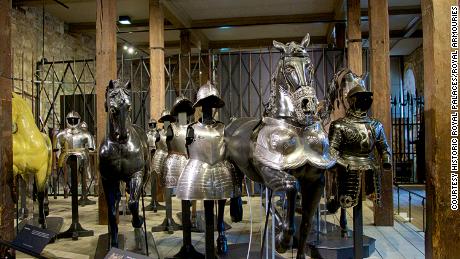
He was buried at the East Smithfield, a site which Museum of London archaeologists excavated in the 1980s. One thousand of the individuals lived before the Industrial Revolution the rest date to the 18th and 19th Centuries.Īnd because the researchers are using the same clinical techniques that modern-day doctors would use, namely digital radiography and CT scanning, they can also compare their finds to medical data right up to the present day. In the project, which is expected to finish in 2018, researchers are analysing 1,500 individuals from the London collection and comparing them to another 1,000 skeletons from areas outside London. That’s really early medieval.”Īll of which results in the opportunity for research projects like this one. Then we’ve got hair from a graveyard, but no body. “We’ve got some fingernails – which are nicely manicured. “We’ve got hair and fingernails, because sometimes you’ll get a weird burial environment where you lose all the soft tissue, but have a full, lovely head of hair,” Bekvalac says. (Find out more about how London’s train lines have turned up human remains in this recent story from BBC Autos.)ĭespite the tissue ban, the centre doesn’t only hold bones. Each time a building is constructed or a railway built, excavations must be carried out to ensure nothing crucial will be damaged, or at least to preserve artefacts and information from the site before it is. Equally important, though, is that many of these remains have been unearthed by London’s ongoing development.

After all, thousands of people have been buried in the city over the centuries. In many ways, it makes sense that a collection of this breadth would be in London. This is what enables this study to be possible now.” “The dataset we have of human skeletal remains, particularly in London, is very large and has grown in past decades. “The scope is a really important thing,” says osteologist Elizabeth Craig-Atkins of the University of Sheffield, who is not involved in the project. It’s a broad question that can only be answered with an equally broad sample size, like the kind at the centre. Led by Bekvalac, researchers are using the skeletons to understand how industrialisation affected the health of Londoners – and how it might continue to do so in the future. They’ve even helped re-write some of history’s most enduring stereotypes, from the idea that the city fell apart in the face of the Black Death (in fact, excavations have shown burials of plague victims were organised, neat and in consecrated ground) or that dental hygiene was terrible until the modern era (instead, the healthiest teeth come from the medieval era – courtesy of a lack of refined sugar).īut with the help of a new project, the bones may also teach us a great deal about modern human health.

“It’s probably the largest single collection of stratified human remains anywhere in the world in one city,” says Jelena Bekvalac, the centre’s curator of human osteology.īecause the skeletons date from nearly every point in London’s history – from the Roman era up to the mid-19th Century – they have taught archaeologists and historians a great deal about London’s past. This is the warehouse for the museum’s Centre for Human Bioarchaeology, home to some 20,000 human remains.


 0 kommentar(er)
0 kommentar(er)
